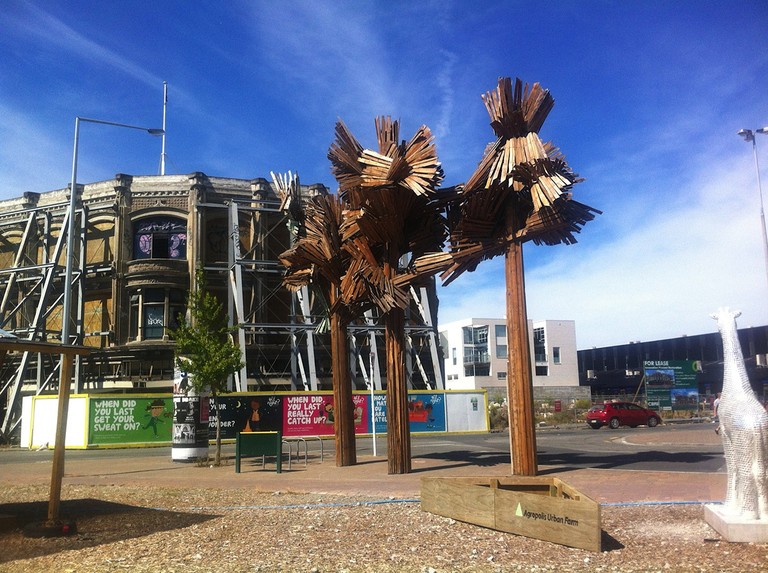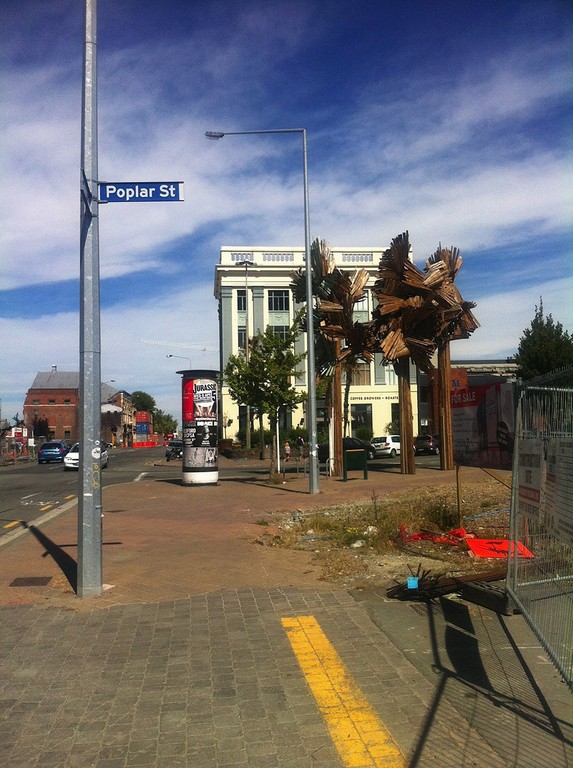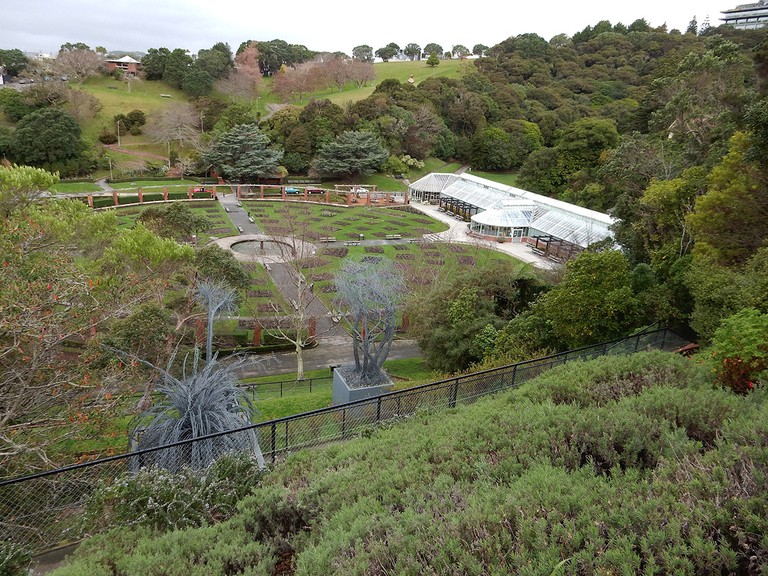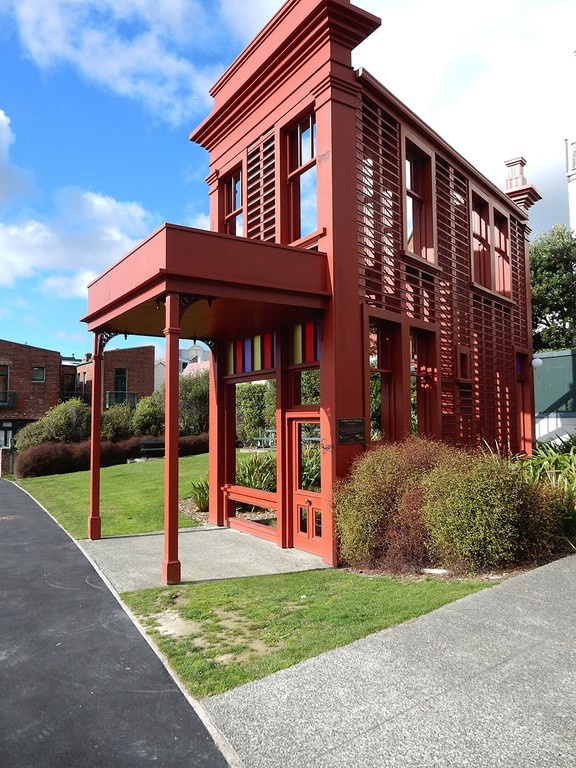The Occasional Journal
The Dendromaniac
March 2015
-
Editorial
Alice Tappenden, Ann Shelton, Jessica Hubbard -
For the trees
Rachel Buchanan -
dwelling trees, tree dwellings
Xin Cheng -
Axis Mundi: Long Live the Tree of Life
Prudence Gibson, Tessa Laird -
Forest satyagraha
Robyn Maree Pickens -
Garden City
Holly Best -
Accentuated Breath
Clare Hartley McLean -
On the portraiture of mushrooms
Creek Waddington -
Shade
Andrea Gardner -
bigwoods
Emil McAvoy -
Regan Gentry: Transformer and Master of Time
Sharon Taylor-Offord -
Colonisation versus conservation: a colonial view
Rebecca Rice -
Tae
Bridget Reweti -
The Framing of the Earth
Richard Shepherd -
Wildness in the Garden of Empire
Shaun Matthews -
In search of unknown vandals
Bronwyn Holloway-Smith, Thomasin Sleigh -
Bo.tan.i.cal: from the Greek
Jessica Hubbard -
The Tree as Traveller: Sakura in space, kōwhai in Chelsea, and the oldest pohutukawa in Spain
Emma Ng -
Seeing the wood and the trees: a complicating history of Hitler’s Oaks
Ann Shelton -
Conversations with Cripplewood
Cat Auburn -
Out of the Woods: The Return of Twin Peaks
Alice Tappenden, Matt Plummer -
The conceptual, the pastoral, and the plainly freakish (or, some of my favourite artworks are trees…)
Martin Patrick -
This is a femme slam.
Sian Torrington -
Explorations
Christian Nyampeta -
Works from the series An Ethnography on Gardening, 2006-2008
Raul Ortega Ayala -
Bent
Jonathan Kennett, Mary Macpherson -
One Shining Gum / Savia Brillante
Christina Barton, Maddie Leach, Zara Stanhope -
Acknowledgments
Alice Tappenden, Ann Shelton
Regan Gentry: Transformer and Master of Time
Sharon Taylor-Offord
Auckland-based sculptor Regan Gentry’s oeuvre to date has been somewhat defined by an abiding interest in plants, their forms, and their effects upon land. 175 years after the signing of the Treaty of Waitangi the ownership of the land of Aotearoa New Zealand remains contentious, and often unresolved. Gentry’s work reminds me that while I define New Zealand as ‘home’, some of my ancestors arrived here in 1864 to form part of the colonial, settler history. When I read the titles of his works — ‘foot in the door’, ‘common cold’, ‘good as a bought one’ — I hear them spoken in the voices from my childhood. So, for me, Gentry’s works transform materials both ephemeral and actual to solidify links in time.
The South Island city of Christchurch has recently been re-Gentry-fied. In 2008, Flour Power — a thirteen-metre-tall wheat sheaf formed from steel lampposts and complete with 153 lamps — was installed in Stewart Plaza as part of the Scape Biennial.1 As I have come to expect from Gentry there is a history lesson embedded within Flour Power; work which in this case refers to wheat crops that settlers planted on cleared land (often acquired under terms now recognized as illegal and/or problematic) in order to establish farms that now play a key role in the resulting local economy. In 2010 and 2011, a series of devastating earthquakes caused Christchurch homes, businesses, heritage and church buildings alike to collapse, resulting in the loss of 185 lives. After the quakes, Flour Power remained standing, albeit behind the barriers of the Red Zone. Today, the corner of central Christchurch’s High and Tuam Streets are graced by Gentry’s recently commissioned Woods from the Trees, three eight-metre tall rimu trees crafted from reclaimed timber from demolished homes. The three new life-sized trees, whose title turns a worn cliché on its head, are jagged and spiky, embodying the feelings of citizens still feeling far from comfortable.

Regan Gentry, Woods from the Trees, Christchurch. Photo © Alice Tappenden
Gentry has a great interest in Christchurch and the city’s rebuild, having grown up near Napier and Cape Kidnappers where geological history is impossible to ignore. He has expressed surprise that few national artists have taken the opportunity to create public sculpture which comments on the city’s post-earthquake situation. Of his trees, he says that their immense size and presence is indicative of the city’s rebuild and a reminder of the great challenges that still lie ahead.2 The work’s subtitle, “A project of possibility’’, indicates his recognition of the trees’ ability – rough, unsteady, and seemingly a little dangerous – to symbolize resilience and hope for the future.

Regan Gentry, Woods from the Trees, Christchurch. Photo © Alice Tappenden
On August 1 2014, when Associate Minister of Conservation Hon. Nicky Wagner unveiled Woods From the Trees, a media release described the work as symbolic of nature and renewal. It was fortuitous for Gentry that his project vision aligned with the Department of Conservation’s goal to bring nature into the city and connect more urban dwellers to conservation. Wagner stated that Gentry’s is one of several urban projects it has partnered with, as DoC trials new ways of engaging with communities.3 The Christchurch City Council and a number of businesses also supported the project, with $100,000 independently initiated by Gentry and project commissioner Brown Bread Ltd, a local social entrepreneur company. A $20,000 gap was crowd-funded by the public, with a portion of this earmarked for the Kea Conservation Trust.4 The green DoC sign alongside the sculpture explains the meaning behind seeing the ‘wood for the trees’, and quotes Gentry as saying that ‘the details are ultimately important as it is them that make up the big picture’. And, as we can see from the picture of the installed artwork, opportunities exist in this city for artists as much as they do for builders, new businesses, and developers. The sign also tells us that ‘The interplay between the built and natural environment creates a bridge from the past – to the present – to a future where nature is part of the cityscape of Christchurch.’5 The ability to provide us with visual realisations of such bridges is a strength of this artist.
If it’s hard for us today to picture what Aotearoa once looked like when trees were more plentiful, we can always look to our extensive archives of early photographs and paintings. While these visual realisations can be fraught with embedded sub-texts, they remain as records of what we may re-gain through conservation. Such vistas enabled surveyors and settlers to form a view of land that, to eyes accustomed to a European built environment and minds accustomed to the notion of individual ownership, appeared empty and therefore ownerless. Without such belief in this erroneous assumption it would have been impossible to justify the formation of this, and other, Imperial colonies. While the Waitangi Tribunal attempts to provide compensation for historic loss of tribal land through claims and negotiations, the process is limited in its ability to provide full and thorough restoration.
The passage of time allows us to see the follies of our earlier selves, and this is particularly evident in how parts of our society now regard our flora and fauna. Before people arrived, more than 80% of New Zealand was covered in dense forest. According to DoC, when Māori arrived, large areas of forest were lost to fires, clearance for agriculture as well as settlement. By the time the first European explorers arrived in 1772, about half of New Zealand’s original forest cover had disappeared.6 Aotearoa now has just 6.5 million hectares of native forest that covers 24% of the land, much of which is the rimu which form Gentry’s trees. Rimu once grew alongside other podocarp hardwoods such as mataī, kahikatea, tōtara and miro in dense luxuriant rainforests.7 While Gentry can’t reverse this destruction, his jagged forms, rising up from the scarred wasteland of the red zone, can create anew and transform a gap. The range of willing financial support proves that there is a bigger picture to be seen beyond the filling of a void. This tangible construction of wood, felled for a family home and returned to an urban forest, pays homage to a past changed violently by nature without consultation. The installation, like the city that surrounds it, is in a state of transition – it will stand on this spot for up to five years.
The awareness of the need to preserve our trees’ unique qualities has, for many, replaced the vision of them as building resources with export-earning potential. In 2006, Gentry clambered around Southland’s gorse-and-heather-planted hills as the William Hodges artist-in-residence. In his resulting exhibition at the Dowse Art Museum, Of Gorse, of Course, Gentry commented upon “the indelible marks left on the landscape by colonial efforts to recreate a European agrarian utopia”.8 In the exhibition’s catalogue essay, Aaron Kreisler explains that William Hodges was the artist on board Cook’s second voyage, whose representation of New Zealand according to a sublime rhetoric resulted in the Pākehā colonial vision which permitted land to be broken, shaped and regenerated.9 Gentry noted that although native trees were valued as a source of lumber and fuel, indigenous species rarely figured in the long-term plans of New Zealand’s early European population. As Gentry and Biddy Livesey write, “this was also a part of the belief that the country’s native plants and animals — and the indigenous Māori people — were all on the road to extinction.”10 Gorse, of course, was planted on this newly cleared land as part of settler re-imagining. His exhibition presented visitors with a range of unlikely goods crafted from gorse which included scent extracted by stroking bushes to retrieve the flowers, and toilet paper made from pulp created by jack-hammer.11 Gentry’s painstaking research and labour transformed seemingly ordinary material goods of settler history into something almost magical. Oh Dear’s antlers refer to the herds of deer from the heather-covered Scottish Highlands which were retained as fond memories by many of Aotearoa’s newest inhabitants. Chop Chop consisted of familiar sights for these toiling settlers — a tree stump, axe, meat cleaver and a chop, all carved from the felled gorse. Gentry used Hodge’s residency to show how the tables were turned when land fought back against the clearance of its once dense native species. Instead of neat pastoral paradise, there was and still is a continued battle to be had with transplanted interlopers. These days, community groups, farmers, and individuals labour to restore areas – both remote and easily accessible — to pre-settlement state. As other artists, too, investigate the results of colonialism upon the land an archive is created, ‘highlighting our fore-bears’ poor judgements’.12
In a second artist residency at Whanganui’s Tylee Cottage in 2008 Gentry examined the history of the Mangapurua Discharged Soldier Resettlement Scheme. Curator Greg Donson likened the artist to those who moved into the Whanganui district after WWI — only to abandon it by 1942 — saying that “like a settler determined to make the best use of his land he works away with steely determination to source materials, explore their properties and then force a sign language between his hands and the form”.13 Gentry created a series of evocative objects in Near Nowhere, Near Impossible at the Sarjeant Gallery. Fine at First was a papa-clay-filled wooden bathtub without space for a human bather; Bone to Pick, as the name suggests, rendered pickaxes unwieldy with the addition of bones to their handles. As he had with Southland gorse, Gentry epitomised the travails of back-blocks farmers who struggled to cope with limited resources. Donson concluded that Gentry’s work allows us to visually revisit history and review its failures and mistakes, which are as much a part of nation-building as success, within the context of current times.14 The sense of futility pervading Near Nowhere, Near Impossible is one that I remember well. One understands that “I’ve had A Gut’s Full” would be how the Mangapurua soldiers referred to their situation as they walked away. The work of the same name made vivid the remote farms which proved unable to support families or livestock, presenting viewers with a life-size naked man formed from canned corned beef and squashed inside a fridge. Gentry communicated Mangapurua’s stifling isolation; the sense of being surrounded by towering papa cliffs and huge dripping trees. To move about the gallery necessitated passing below The End of the Tether, a suspended bridge hand-constructed from knotted rope. It is a model of Mangapurua’s own Bridge to Nowhere, which now stands cast adrift in the regenerating native forest, no longer needed after the last family left and New Zealand moved on from the vagaries of reliance upon an agrarian economy.

Regan Gentry, Green Islands, Wellington Sculpture Trust, Wellington Botanic Gardens. Photo © Sharon Taylor-Offord
When Gentry lived in Wellington, I was attracted to the playful and accessible nature of his work. His sculpture, Green Islands (2007), graced the Four Plinths project on the waterfront, next to the national museum. Its twisted wire trees stood there for two years before being successfully transplanted to a hillside in the Wellington Botanic Gardens, where they remain as alien additions anchored atop their concrete bases. While Gentry’s works often appear lighthearted, they — like these trees — have a steely core. Green Islands’ trees are replicas of the varieties of hardy species commonly planted by councils. The alien grey metal has more in common with the garden’s handrails than the surrounding plants and frames a view from a vantage point just above the Terrace, where the Waitangi Tribunal has been recognizing and debating Māori land claims since 1975.
Regan Gentry says of his artistic practice that he typically aims to depict the relationship of people to their environment, and how this is acted out. He attempts to be playful, to utilize familiar items, and to inform his work with conceptual decisions, often informed by the interplay of people and place, local history and situational relevance.15 Gentry pokes gentle fun at our failures to civilise this land as a mirror of Europe, while providing us with markers of what we have achieved.

Regan Gentry, Subject to Change, Wellington Sculpture Trust, Karo Drive, Wellington. Photo © Sharon Taylor-Offord
The solidity and heft of Gentry’s Subject to Change (2009) suggest longevity and strength while again drawing attention to local history. The sculpture, which stands beside the inner city segment of SH1 on Karo Drive in Wellington, was funded by Transit New Zealand with additional contributions from the Wellington Sculpture Trust and the Wellington City Council. Its red-painted-steel outlines an enigmatic ghost of a shop-front, typical of the early buildings that were felled for 2004’s Inner City Bypass project. Gentry’s re-design of a local historic building’s façade stands opposite its surviving neighbours, in the Tonks Grove heritage precinct, which were saved and restored after protests about their proposed destruction.16 Their red trim echoes Subject to Change’s rusty exterior, creating a modern day circle of life, with metal frame replacing wooden homes. Gentry played with a second roading project in 2009, installing Make Way for eight weeks just a short walk away from Karo Drive in the council-administered City Gallery in central Wellington. No concrete and steel here; rather, a complex interweaving of cane baskets and twine which formed a motorway to nowhere, once again hanging above the viewers heads. There is no escaping the markers of European settlement – the City Gallery was originally the city library. Like Gentry’s materials, it has been repurposed.
Once bedded into the urban landscape, such works serve as familiar and comforting elements of our environment, extending invitations to stop and look, to contemplate and consider. Of course, viewers’ responses to any artwork will always be unique and individual. It is vital, however, that we have a variety of objects to consider which critique our histories, and never more so than in settler cultures. Plentiful public spaces allow for a variety of approaches to art and individual voices to be heard, enabling us to identify with and benefit from work that refers to many aspects of our heritage. Contemporary public artwork has relevance beyond the bronze authority figures found in civic squares throughout the country, which were commissioned from the United Kingdom, cast, and then transported here. The necessity to be grounded in and aware of our past is a global one – I, like many, have a desire to belong to something tangible and identifiable. The Havana-based international curator, critic, art historian and writer Gerardo Mosquera suggests that this is part of the “from here” paradigm. He considers that the work of many contemporary artists, rather than naming, describing, expressing, or building contexts, is constructed from their personal, historical, cultural, and social context in international terms.17 Certainly, Regan Gentry fits this category. His international showings have included the gigantic reclining deckchair of Recliner Rex/ Limousine Lounger seen on Bondi Beach, Sydney, as part of Sculpture By the Sea in 2005, and his parody of attempts to protect trees from construction in Rotterdam in Mollycoddler (2011). Whether it be trees of spiky boards, scented knotty rope bridges, or stained glass windows to nothingness, the works of Regan Gentry are examples of these links to a personal heritage. These are the pictures which I carry in my mind. Many who have been in New Zealand will have such memories: a red shed, a back-blocks farm, a shonky one-way bridge, or a creaky old wooden house.
Remember that DoC sign, which told us of how interplay between the built and natural environment could provide us with a bridge between the past, our present, and onto a future where nature is a part of the cityscape? By creating vibrant, thought-provoking works which transform and communicate history, allowing us to form our own conclusions about the actions of our forebears while gently poking fun at them, Gentry gives us sculpture which holds appeal for locals and visitors alike. We can see the wood for the trees in the rimu forms placed on an intersection. As trees grow from tiny seeds, so the city will rise again. It’s just another alteration in one country’s evolution.
About the author
Sharon Taylor-Offord is a recent graduate of Victoria University of Wellington who divides her time between working in the museum and gallery sector and continuing the research and writing to which she was introduced during her studies.
-
1.
Regan Gentry, “Flour Power,” accessed January 19, 2015, http://www.regangentry.com/featured/flour-power/
-
2.
“Christchurch urged to vote for art with their wallets,” Brown Bread Ltd, Rebuild Christchurch, accessed August 20, 2014,http://rebuildchristchurch.co.nz/blog/2014/5/christchurch-urged-to-vote-for-art-with-their-wallets
-
3.
Nicky Wagner, “New City Sculpture for Christchurch,” National, http://www.national.org.nz/news/news/media-releases/detail/2014/08/01/new-city-sculpture-for-christchurch (accessed August 8, 2014).
-
4.
“Christchurch urged to vote for art with their wallets,” Brown Bread Ltd.
-
5.
Woods from the Trees, Facebook update, accessed July 30, 2014, https://www.facebook.com/woodsfromthetrees/photos/a.295325697283452.1073741829.289822601167095/339529966196358/?type=1&theater
-
6.
“New Zealand’s native forests,” Department of Conservation, accessed October 29, 2014 http://www.doc.govt.nz/conservation/native-plants/new-zealands-native-forests/
-
7.
Ibid.
-
8.
Aaron Kreisler, “Hard Labour,” accessed August 19, 2014, http://www.regangentry.com/featured/of-gorse-of-course/
-
9.
Ibid.
-
10.
Regan Gentry and Biddy Livesay, “Reluctant Emblem,” accessed August 19, 2014, http://www.regangentry.com/featured/of-gorse-of-course/
-
11.
Of Gorse of Course, Dowse Art Museum, accessed November 5, 2014, http://dowse.org.nz/exhibitions/detail/of-gorse-of-course
-
12.
Ibid. Such artists include Shaun Waugh, whose Covenant Cut-outs (2012-14) document a number of areas preserved for the future by farmers who have entered into a covenant in perpetuity with the Queen Elizabeth II National Trust, and Ann Shelton, whose Landschaft The Bridge to Nowhere, Mangapurua Valley, Wanganui (2007) provides us a glimpse of another Mangapurua Valley location.
-
13.
Greg Donson, “Regan Gentry. Near Nowhere, Near Impossible,” Whanganui: Sarjeant Gallery, 2008, accessed August 19, 2014,
http://www.regangentry.com/featured/near-nowhere-near-impossible/ -
14.
Ibid.
-
15.
“Info”, Regan Gentry, accessed August 8, 2014, http://www.regangentry.com/info/
-
16.
“CV”, Regan Gentry, accessed October 29, 2014, http://www.regangentry.com/cv/
-
17.
Gerardo Mosquera, “Beyond Anthropophagy: Art, Internationalization, and Cultural Dynamics” in The Global Contemporary and the Rise of New Art Worlds, eds. Hans Belting, Andrea Buddensieg and Peter Weibel (Cambridge, MA/London, Eng: The MIT Press, 2013), 236.
